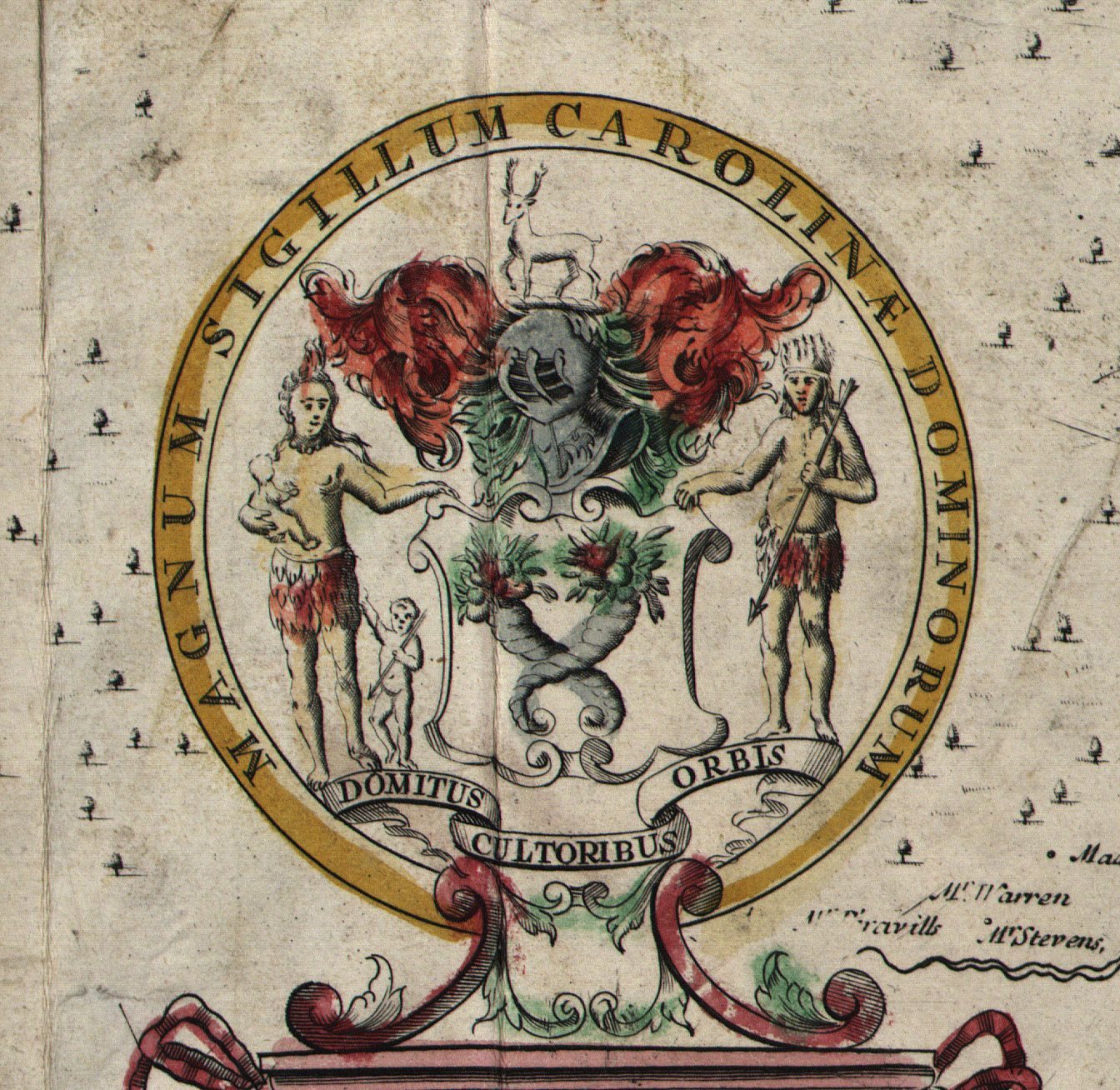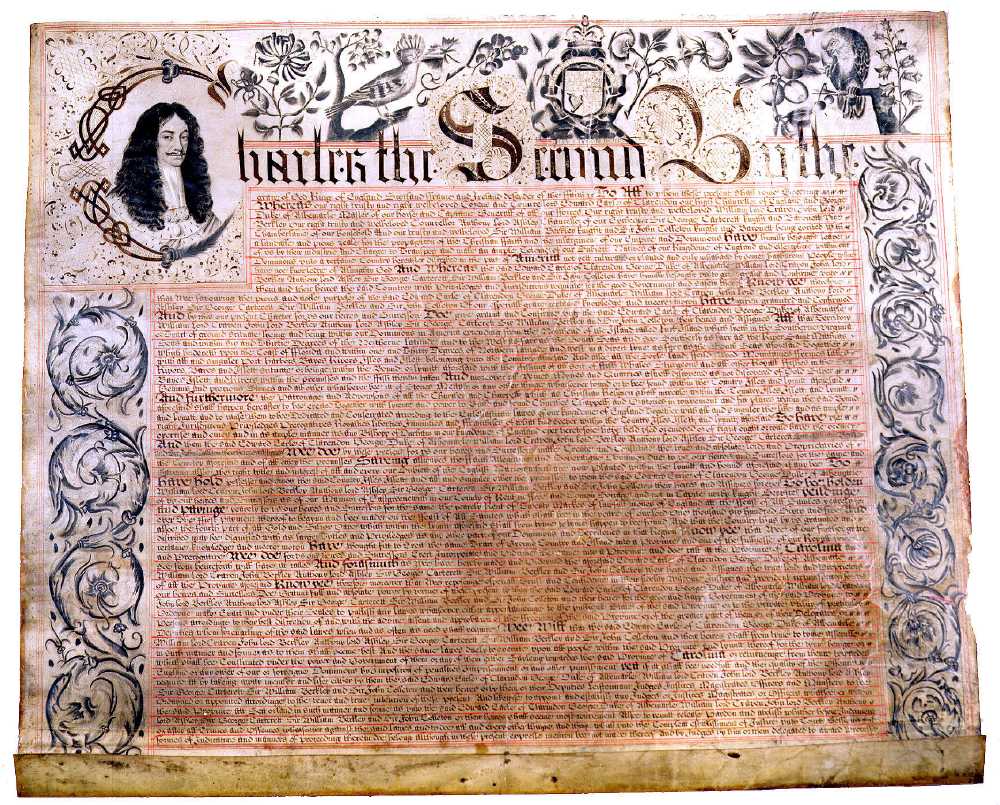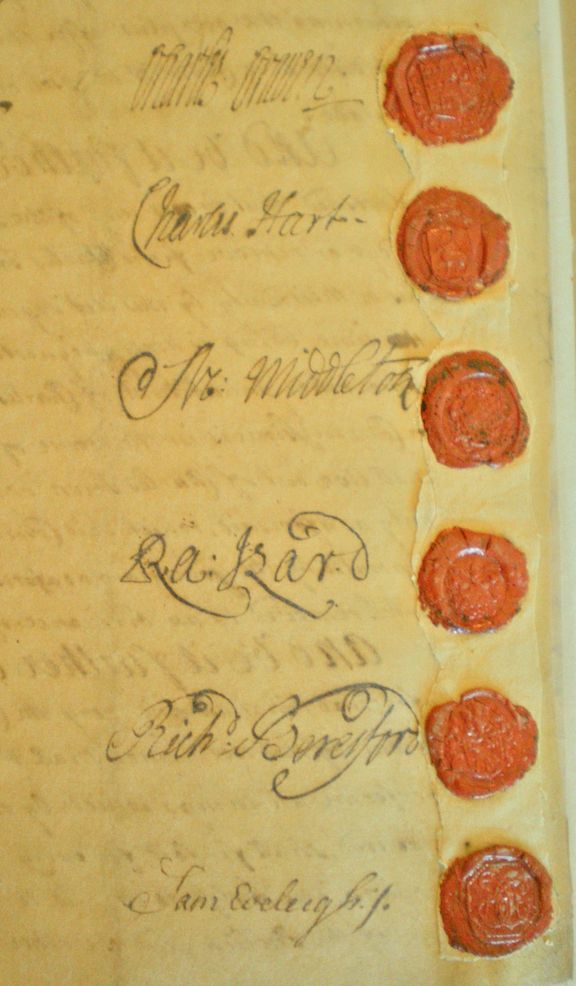
South Carolina was born as an English colony and continued as such until the American Revolution, but its first century of existence was marked by two contrasting periods characterized by different forms of colonial administration: An initial “proprietary” era gave way to a “royal” system of government after a bloodless rebellion in 1719. To help us appreciate the impact of that political uprising, let’s compare the pros and cons of the two contrasting forms of colonial oversight that motivated one of the most important incidents in our state’s history.
Like all the other English-speaking colonies in the New World, South Carolina was established as a private venture undertaken with the permission and encouragement of the reigning monarch of England. In 1663, the crown or royal government under King Charles II empowered a small of group of eight men, known as proprietors, to establish a colony called Carolina and to erect therein a system of government based on English precedents and customs. The proprietors had recently helped Charles II regain the crown after years of civil war and experimental government, and the king expressed his gratitude by granting them a sizeable tract of the North American continent. Because the eight grantees were all titled men of the English aristocracy, they were commonly identified as the Lords Proprietors of Carolina. As the individual proprietors died or retired, they bequeathed or sold their shares to subsequent generations of men who inherited the mantle of proprietorship in the Carolina venture. The period during which the colony existed under the direct management of these shareholders is known as the “Proprietary Era” of Carolina history.
We might think of the first fifty years of South Carolina’s history, from the first permanent settlement in April 1670 to December of 1719, as a period of slow growth under an imperfect government. The proprietors in England crafted a grand and impractical political framework in 1669, called the Fundamental Constitutions, that envisioned an orderly, quasi-feudal society under their immediate control. The colonists who actually ventured across the ocean to settle the land had different ideas, however, and the Fundamental Constitutions were never formally put in force. In their place, the settlers preferred to improvise a sort of representative government within a framework condoned by the proprietors. Each of the eight Lords Proprietors appointed a deputy to represent him in an executive “Council” held in Charleston, with the governor being the representative of the chief proprietor or “palatine” of Carolina. These councilors interacted with another body of men elected from among the colonial population. The colony’s charter empowered this provincial legislature to enact its own laws as long as those laws were not repugnant to the body of English law. The charter also empowered the proprietors to annul or dis-allow laws that they found objectionable or that infringed on their private interests.

In the interest of time and simplicity, I’ll offer the following sweeping oversimplification of the details and convoluted facts found in a host of scholarly sources: The government of Proprietary-Era South Carolina was generally inconsistent and insufficient. Greed, personal animosities, petty rivalries, and a general lack of firm oversight all conspired to sap the government’s strength and effectiveness. The Lords Proprietors back in England eventually grew disenchanted with the colony that failed to produce the great wealth and prestige they had expected. Their disappointment evolved into apathy, and the Carolina colonists learned to survive with minimal assistance and encouragement from their increasingly passive proprietors.
Although it wasn’t obvious to the aristocratic men who created Carolina or any other English colony in the seventeenth century, the idea of a proprietary management scheme was deeply flawed from the beginning. The English had little experience in overseas ventures at the time, and the crown government wasn’t in a position to fund a series of expensive expeditions to stake claims on vast territories in the New World. Other European nations were quickly dividing up the new continental territories, however, and the English monarchy had to improvise methods to jump-start its participation in that real estate bonanza. The cheap and easy solution was simply to grant land claimed merely by royal decree to wealthy individuals who would agree to sponsor the expensive efforts of exploration and settlement. Virginia and the New England colonies, for example, were founded by agents of joint-stock companies sanctioned by royal approval. There, as in Carolina and the other proprietary colonies, the proprietary management scheme did not lead to the most effective or satisfactory governments. The reigning monarch wielded only indirect control over these ventures, while the practical management and oversight was left to shareholders who themselves rarely—if ever—traveled across the Atlantic to participate directly in colonial administration. The great physical distance between the investors and the colonists in turn created an environment that fostered abuses of power, graft, discrimination, and a host of other problems.
To illustrate the flaws inherent in the proprietary scheme, let’s imagine the viewpoint of an hypothetical colonist. The economic and political life of an English citizen in the late seventeenth century was shaped by certain known customs, practices, and laws controlled at the highest level by the royal government. By moving across the ocean to a proprietary colony like early South Carolina, however, that same English citizen put him or herself under the new rules of a distant private regime, and became one step removed from the authority of the English Crown. While this legal distance might seem appealing to some, there was a definite downside to this scenario. The intermediary layer of proprietary government was not as stable or consistent as its royal parent, and there was very little oversight from crown officials. As a result of these conditions, the rule of law in South Carolina (and other proprietary colonies) was often bent to suit the will of the men holding the reins of power, and complaining to the distant and passive Lords Proprietors didn’t always help. People who felt their legal rights had been infringed by the proprietary government might have said to themselves, “this would never have happened back in England,” or “the King’s government would not have treated me so.” If they took their complaints to the reigning monarch, the king or queen directed them to address their grievances to their proprietors. In order to live under the auspices of a more stable, effective, and responsive government, therefore, most colonists preferred to cut out the middleman and live directly under the administration of the crown government.

If you’re unfamiliar with the dramatic story of South Carolina’s rebellious coup of 1719, you’re not alone, and slack shall be cut for you. The task of explaining this revolution is complicated by the fact that the documentary record of this important event is fragmentary and incomplete. Historians writing about this topic in the nineteenth and twentieth centuries had few contemporary resources from which to construct a satisfying narrative. The hand-written legislative journals of this era, which might provide detailed insight into the motivating factors and the sequence of events, mysteriously disappeared nearly three hundred years ago. They apparently fell victim to the confusion that occurred during the unusual transition of power in 1719. A handful of private letters, sent from South Carolina to England during the crisis and preserved among the records of the British government, provide tantalizing snapshots of the events of that era. More importantly, Francis Yonge, a witness to the revolution and a participant in the action, composed and published a very useful pamphlet in 1726 titled A Narrative of the Proceedings of the People of South Carolina, In the Year 1719.
Until recently, Francis Yonge’s brief Narrative of the Revolution of 1719 provided the most comprehensive account of that dramatic episode in our history. Our knowledge of this story improved greatly in the mid-1980s, however, when a small cache of government documents, created by members of the rebel faction in late 1719, was “rediscovered” in Charleston and transferred to the South Carolina Department of Archives and History in Columbia. Alex Moore’s 1991 doctoral dissertation, which you can find on the shelf in the S.C. History Room at CCPL under the title “Royalizing South Carolina,” provides the first and, so far, best analysis of those “new” documents in the context of the Revolution of 1719. But you don’t have to trust my word on this topic. The courteous staff members of our amazing state archive have digitized that cache of government documents “rediscovered” in 1985 and mounted them on the Internet for public use: South Carolina General Assembly, Commons House, Sessional Papers, 1718–1725.

The success of the Revolution of 1719 triggered a long period of transition with activity on both sides of the Atlantic. The crown government in London accepted the colonists’ invitation to take over South Carolina in 1720, and the king’s ministers opened a dialogue with the Lords Proprietors about dismantling Carolina’s proprietary charter. A provisional royal governor, Francis Nicholson, arrived in Charleston in May of 1721, and a new, quasi-royal administration began to govern South Carolina. The crown’s efforts to buy out the eight shares of the Carolina colony were frustrated by a succession of political and economic factors, however, and the process dragged on for several years. The formal surrender of the Carolina charter finally took place in England in the middle of 1729, but the provincial government of South Carolina wasn’t fully “royalized” until the end of 1730. Following the arrival of the colony’s first official royal governor, Robert Johnson, in mid-December of that year, South Carolina commenced a new era of prosperity and stability and prosperity.
The difference between the proprietary and royal governments of early South Carolina might seem a bit pedantic to some, but let’s consider a few important points to conclude today’s program. The growth of colonial South Carolina was not a steady or even progression from the arrival of the first settlers at Charles Town in 1670 to the beginning of the American Revolution in 1775. Rather, the progress and character of South Carolina can be divided into two well-defined eras. The colony’s economy, population, and reputation grew slowly during the early decades, in part because of the inefficient system of proprietary government. Following the Revolution of 1719 and the subsequent slow transition to royal administration, however, South Carolina emerged in the early 1730s as a more stable, attractive, and profitable venture. Increased investment in rice and other agricultural endeavors fueled an increased demand for enslaved labor. South Carolina had a black majority by the year 1708, but the growth of the enslaved population exploded after the commencement of the royal era. The rapid growth of the agricultural economy in turn produced great wealth that fueled an increasingly sophisticated cultural scene. By the 1770s, South Carolina had earned a reputation as one of the richest, most cosmopolitan, and most influential of the British colonies in North America.

For further reading on this topic:
Lesser, Charles H. South Carolina Begins: The Records of A Proprietary Colony, 1663–1721. Columbia: South Carolina Department of Archives and History, 1995.
Moore, John Alexander. “Royalizing South Carolina: The Revolution of 1719 and the Evolution of Early South Carolina Government.“ Ph.D. diss., University of South Carolina, 1991.
Rivers, William James. A Sketch of the History of South Carolina to the Close of the Proprietary Government by the Revolution of 1719. Charleston, S.C.: McCarter & Co., 1856.
Rivers, William James. A Chapter in the Early History of South Carolina. Charleston, S.C.: Walker, Evans & Cogswell, 1874.
Roper, L. H. Conceiving Carolina: Proprietors, Planters, and Plots, 1662–1729. New York: Palgrave Macmillan, 2004.
Scheerer, Hanno T. “‘The Proprietors can’t undertake for what they will do’: A Political Interpretation of the South Carolina Revolution of 1719,” in Michelle LeMaster and Bradford J. Wood, eds., Creating and Contesting Carolina: Proprietary Era Histories (Columbia: University of South Carolina Press, 2013), 273-94.
PREVIOUS: Christmas Traditions in Early Charleston
NEXT: The South Carolina Revolution of 1719, Part 1
See more from Charleston Time Machine
